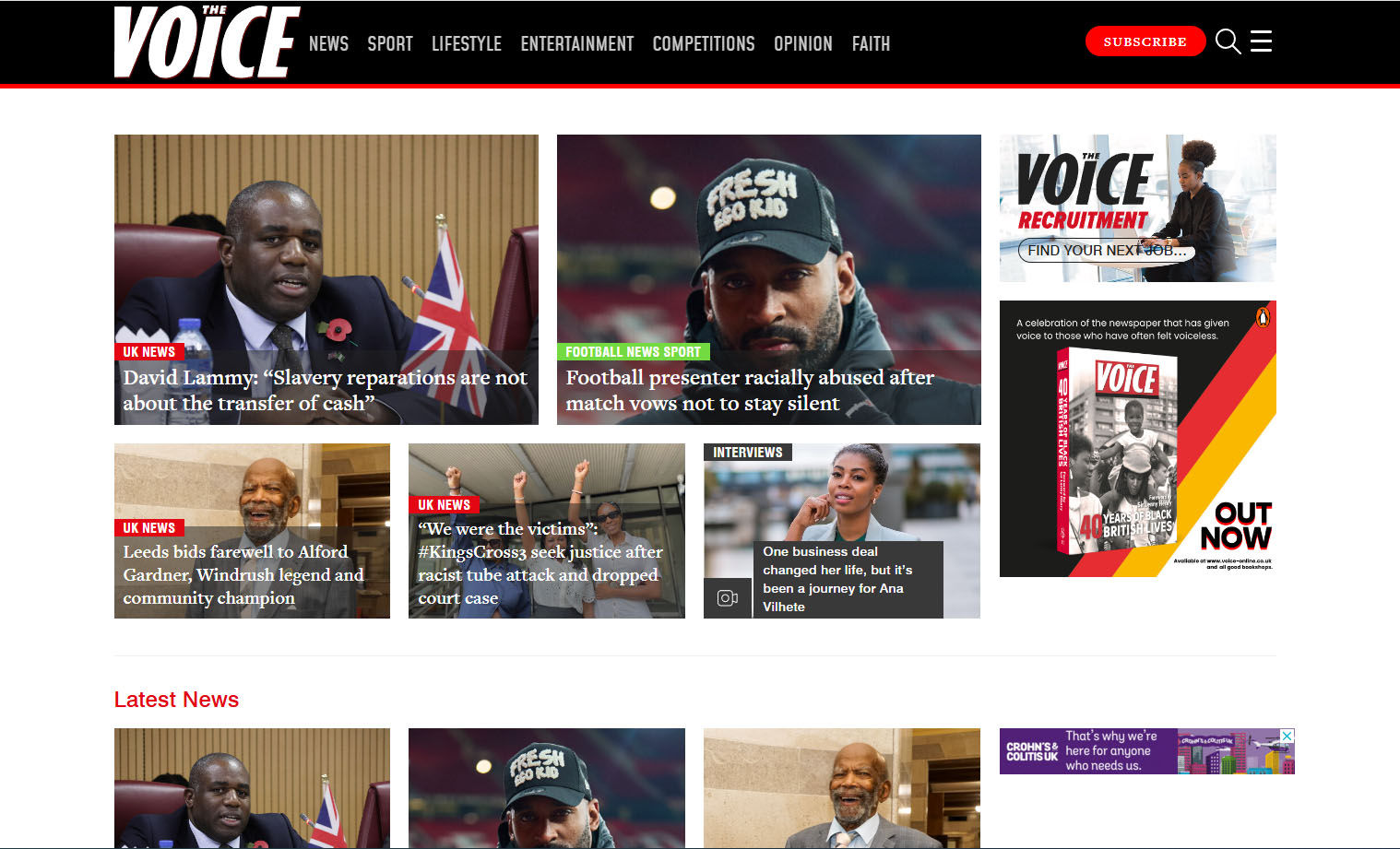PAPER 2 (LONG ANSWER) Online, social and participatory – news website, produced by and targeting a minority group.
Social, political, economic and cultural contexts
The Voice as an institution has historical and cultural significance in its origins (1982) as the UK’s first (and only) newspaper aimed specifically at a Black British audience, dealing with relevant political and social issues. The website continues this function but is perhaps considered more mainstream and less political than in the past. The economic context can be explored through a consideration of the nature of the production and distribution and move to online content to reach a wider audience and attract advertisers.
The Voice is a commercial media product but could also be seen as fulfilling a public service through its targeting of an ethnic minority audience. The website also demonstrates the way that news institutions have had to respond to new technology through The Voice’s bi-media presence
and use of convergence.
- The Voice provides a case study for the specialised nature of media production, distribution and circulation within a regional and national context
- The use of digital platforms to expand the output and reach of the products demonstrates how institutions have responded to the impact of new technology.
REPRESENTATION
These include the representation of the target audience – Black Britons – but also the selection and construction of news stories and their subjects. The analysis of representation can be used to explore target audiences and ideological readings.
The Voice CSP provides an example of a clearly targeted, primary audience through demographics of ethnicity, race and age, which should encourage the study of issues of identity.
AUDIENCE
Related to this would be a discussion of the changing relationship between producers and audiences – is there a need for media aimed at specialised audiences in the context of audience as producer? (Clay Shirky ‘end of audience’ theories)
- Definitions of mass and minority or specialised audiences
- Debates around the idea of targeting specialised audiences (by race, age, lifestyle, etc) and how successful that targeting is in reality
- Differing interpretations by different groups – those belonging to and outside the primary audience (Stuart Hall – reception theory)
- Opportunities for audience interactivity and creativity

